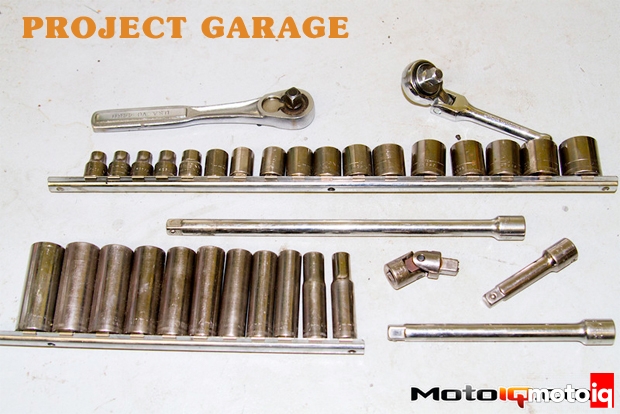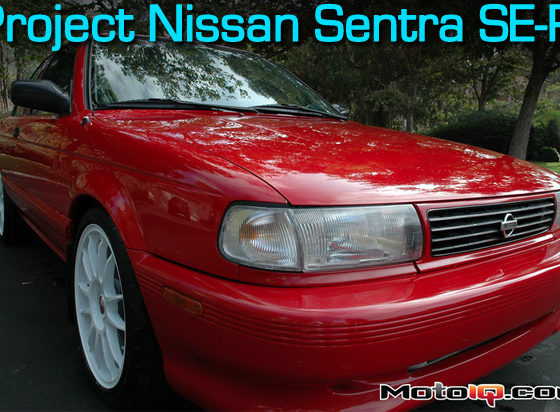 |
| What a pretty assortment from ratchets and sockets (short and deep) to wobble drives and extensions. |
Project Garage Part VII: Garage Tools
By Sarah Forst
During my college years, my student budget limited me to quality just above a Fisher Price tool set. While kids toys are adequate for playing doctor (wink, wink), playing mechanic was getting more difficult. As I changed oil using a scissor jack and a prayer, I realized a good set of tools would make everything easie r- saving me the pain and aggravation I was experiencing, and maybe even my life! It’s time to grow up and graduate to the big boy tools.
There's the obvious – wrenches, ratchets, and sockets – and the selection is endless. Cheap sets are available from Husky to Harbor Freight (yes, I love that store; no I don't own stock there…), but cheap breaks. Often. Usually when you have your car torn apart and it's midnight, and your finger is stuck in a hole but your cell phone is on the other end of the garage. Or so I’ve heard. Cheap tools are great for carrying in your car if your lug nuts aren't tight or your cold air intake becomes loose, but nothing beats good quality. Stalk the Snap On guy. That red truck to me is like an ice cream man to a seven year old kid. Just don't follow him drooling over his long thick wrench mumbling something about wanting to get your hands on it – it'll make future tool buying a little uncomfortable.
 |
| It's my OCD organized tool rack, from Phillips on the left to flatheads on the right, wtih snap ring pliers and hex keys in the middle. |
Let’s state the obvious- screwdrivers are always handy. Flatheads have one straight blade. Phillips have a cross pattern (4-tipped) tapered blade with a sharp tip. Get both in varying sizes. Use the correct size that fits securely without overlap to prevent damaging the screw slot. Torx drivers have an internal socket six-point star shaped screw design and come in sizes from T1 to T100. They are designed to provide more contact with the head and prevent over-tightening or stripping a fastener. Torx drivers are offered as either internal drive (screwdriver style) or external drive (socket style) tools. You can buy all screwdrivers in sets. Quality and price are simply a matter of tensile strength and sometimes ergonomics.
 |
| Check out my handy dandy guide to screwdriver tips. |
 |
| A nut driver (heh…) is kind of like a screwdriver with a socket on the end, used for tightening nuts and bolts. |
Get some good sockets. You'll need at least a set of 6mm to 32mm, as well as thin walled ones for tight spots, deep sockets for getting bolts embedded within a component (often suspension) or for taking a nut off a stud, and flex sockets for interestingly angled jobs. You’re more likely to find metric fasteners on our cars but depending on the parts manufacturer, there may be some combination of SAE fasteners as well. Both types will often come in handy, especially since you can never be sure a mechanic or the previous owner has replaced the bolts with the correct size.
Sockets are available in 6 (hex), 8, and 12 (double hex) point gripping ends. 6 point sockets are less likely to round off a bolt. You should also have a set of impact sockets to use with air tools. Crowfoot sockets are either flared or open ended box wrenches that can be used with a ratchet and extension. These are handy for working in tight spaces where you can't really rotate a socket wrench, such as power steering or clutch master cylinder and slave cylinder jobs. Pick up some extensions from 1″ – 12″ in case your ratchet isn't equipped with Go Go Gadget arms as well as a few wobble drives, which allow the socket to pivot around 15 degrees for better access to bolts.
 |
| Sockets come in many different sizes, lengths, and thicknesses. |



